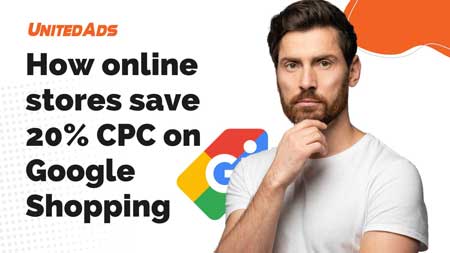Question: Why was Google Shopping CSS introduced?
Alex Sperber: The importance of Google Shopping had grown so much that in 2017 the European Commission finally took notice. Google’s search results only included offers from Google’s own price comparison site Google Shopping. On the grounds that Google had “placed its own price comparison service at the top of its search results and downgraded competing comparison services,” the EU imposed a competition fine of €2.42 billion on Google and required Google to open Google Shopping to other product searches and price comparisons within the EU.
At the end of September 2017, shortly before the EU Commission’s 90-day deadline expired, Google announced that it would be decoupling its Google Shopping service (google.com/shopping), which had previously been integrated into web search. Since then, Google Price Comparison has had to book ad space on search results pages itself and competes with other so-called “comparison shopping services” (CSS).
To enable fair competition, Google granted the competition a not inconsiderable margin of around 20% on the click price on Shopping ads.
Question: How has the Google Shopping auction changed?
Alex Sperber: The first and most visible change for consumers is in the way ads appear on the results page. When an ad is placed by a CSS, you can see it at the bottom of the respective ad. It does not say “From Google”, but the name of the corresponding price comparison site.
When a user clicks on the “From UnitedAds” link, they are redirected to the product search website. The percentage of users who click on this link is minimal. Most consumers probably won’t even notice the change. As more and more ads are played out across different CSS, showing different price comparisons will become the norm anyway.
The crucial change is not visible and concerns the auction around the display seats. In order to encourage competitors of the Google price comparison Google Shopping to participate in the shopping auction, Google changed the rules of the game. For Shopping ads in the European Economic Area based on Google Shopping, the CPC deposited via Google Ads is split into two parts: the actual CPC and a margin.
The margin is a fixed percentage of the CPC set by Google. This margin is around 20 percent.
So if a merchant places a bid of 1€ via Google Shopping Europe (Google’s own price comparison), also called GSE, about 0.20€ of that goes to Google as margin and 0.80€ goes to the auction. If the merchant now goes through another CSS, he can reduce his bid to 0.80€ and is still competitive in the auction against the ads entered by Google Shopping Europe.
The dealer can of course leave his bid at €1 and thus win more auctions, i.e. achieve more coverage.
Question: Does Google Shopping Europe actually deduct its margin from my CPC?
Alex Sperber: Yes, the margin goes directly off your maximum CPC in Google Shopping. You therefore participate in the auctions for the ad space with a bid reduced by approx. 20% and receive correspondingly less visibility with the same bid.
“If you haven’t switched to a Google Shopping CSS yet, use Google’s price comparison service (Google Shopping Europe or GSE), which retains about 20% of your bid as margin.”
Question: Does this mean my CPCs will increase if I continue to run my Shopping Ads through Google Shopping Europe?
Alex Sperber: No, CPCs are not increasing, in fact they remain at too high a level. If you have not yet switched to a Google Shopping CSS, use Google’s price comparison service (Google Shopping Europe or GSE), which retains about 20% of your bid as margin.
Question: Does CSS affect all bids I place for Shopping Ads?
Alex Sperber: Margin is only collected on ad plays in the main search results page that are played above the organic, text-based results. Typically, however, these make up the majority of traffic through Google Shopping.
Question: Why does Google differentiate between the ad spaces in Google main search and the Google Shopping portal?
Alex Sperber: The EU Commission considers Google Main Search and the Google Shopping portal to be separate entities. The EU recognized an infringement of competition in the proprietary use of ad space in Google’s main search. That’s why CSS was introduced only for the shopping ads above the text-based search results in the main search.
Question: So can I run my Shopping Ads through a CSS partner only on the main search results page?
Alex Sperber: When CSS was introduced, that was the case, yes. In the meantime, however, there is an opt-in for the Shopping page and the Google Partner Network that allows you to run your Shopping Ads on all pages through a CSS partner as well.
If you decide not to opt-in, you have the option of placing different bids for the two Google interfaces. However, you should carefully consider whether the double effort is worth it for your own company.
Question: For whom does it make sense to use GSE and CSS parralel?
Alex Sperber: On the one hand, ad placements in the Shopping Tab are likely to become significantly cheaper, and bids lower. On the other hand, how big is the traffic share in the shopping tab really? Can this justify the double nursing effort? The presence in Google Shopping Europe and a CSS partner is particularly worthwhile for large advertisers. For them, the lower traffic share in the shopping tab could also be a factor.
Question: Which CSS setup would UnitedAds recommend me?
Alex Sperber: Mainly we recommend the complete move to CSS. In this case, your accounts will only be linked again, the setup otherwise remains the same. In plain language, this means: little effort for the retailer, with full exploitation of the CSS advantage.
Question: What strategy should I follow if I want to buy more traffic with CSS?
Alex Sperber: After the switch from GSE to CSS, the margin that was deducted from your bids is eliminated.
Leave CPCs at this level, go into auctions with higher maxCPC bids. As a result, your ads will be played more often and you will get more traffic. No changes need to be made. This happens automatically.
Question: Assuming a retailer wants to directly reinvest the savings from CSS, how should they proceed?
Alex Sperber: If the savings from the approx. 20% cheaper CPCs at CSS are to be reinvested immediately, the optimization targets should be relaxed by approx. 20%. However, we recommend that you do not increase your bids again immediately after switching to a CSS. This should be done no earlier than 2-3 weeks after the changeover.
Question: What does the future of Google CSS look like?
Alex Sperber: While the lifespan of CSS Shopping was unclear at the beginning, there is now much to suggest that Google CSS will endure in the long term. The EU’s pressure on Google continues to grow. The fact that GSE is still represented significantly more often in the search results than CSS Partners shows that there is still room for improvement. Google is therefore well advised to continue to motivate third-party product searches to be present in Shopping ads. Google does this, for example, by developing formats like Comparison Listing Ads (CLA) that are specifically designed for CSS partners.
Those who still rely on GSE due to uncertainty should now at the latest deal with CSS. Because the subject matter has come to stay. The short notice with which Google informs about changes continues to be challenging. CSS providers and advertisers need to be proactive and far-sighted if they are to remain successful in the CSS jungle in the future.
Question: Who can I contact if I have more questions about the Google Shoppig CSS platform?
Alex Sperber: Who your Google Shopping contact is after migrating to Google CSS depends on whether your CSS has agreed to the so-called “waiver”. The waiver grants your Google Account Managers visibility into your accounts even after the migration. In this case, you can also advise after the migration.
If you have any questions about the migration, you can of course also contact us at any time.






